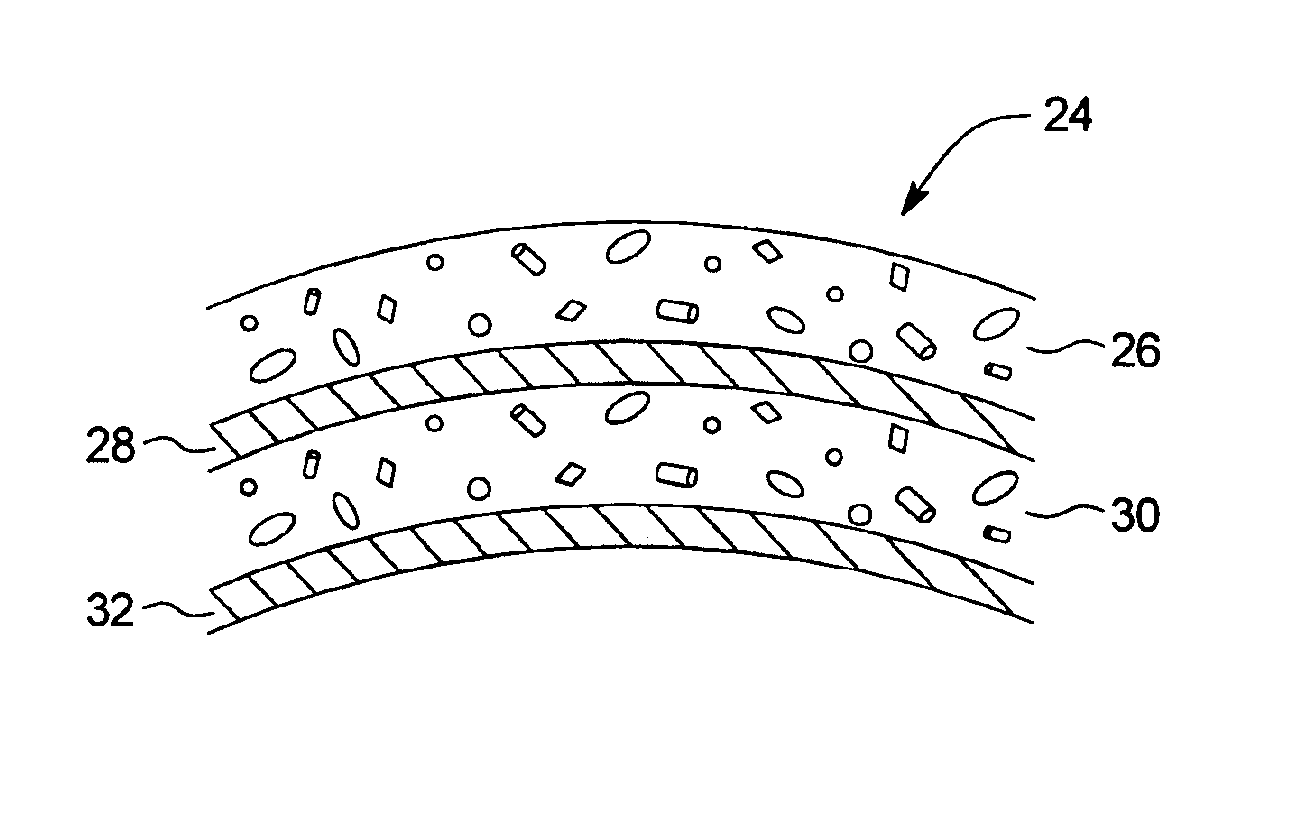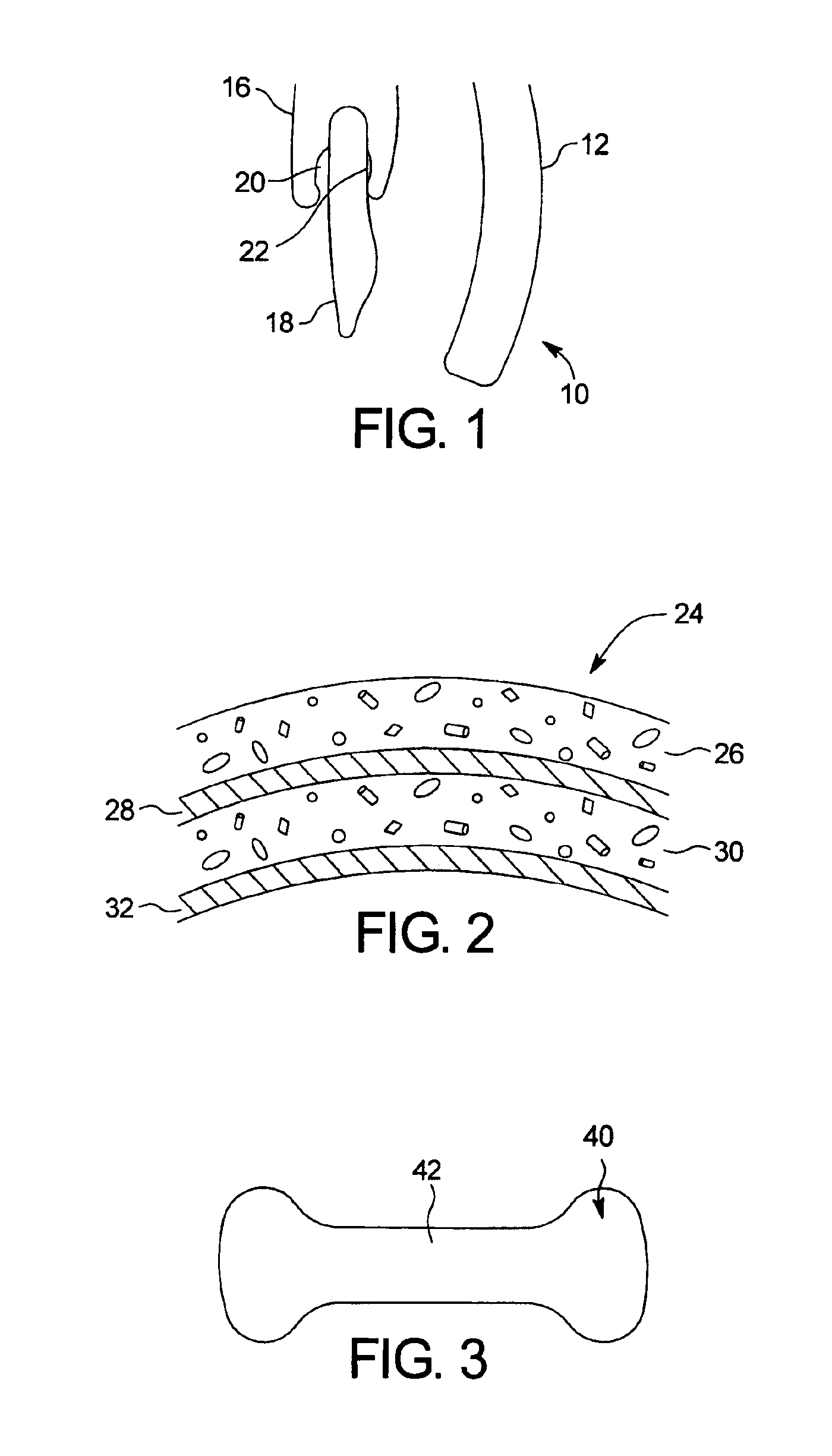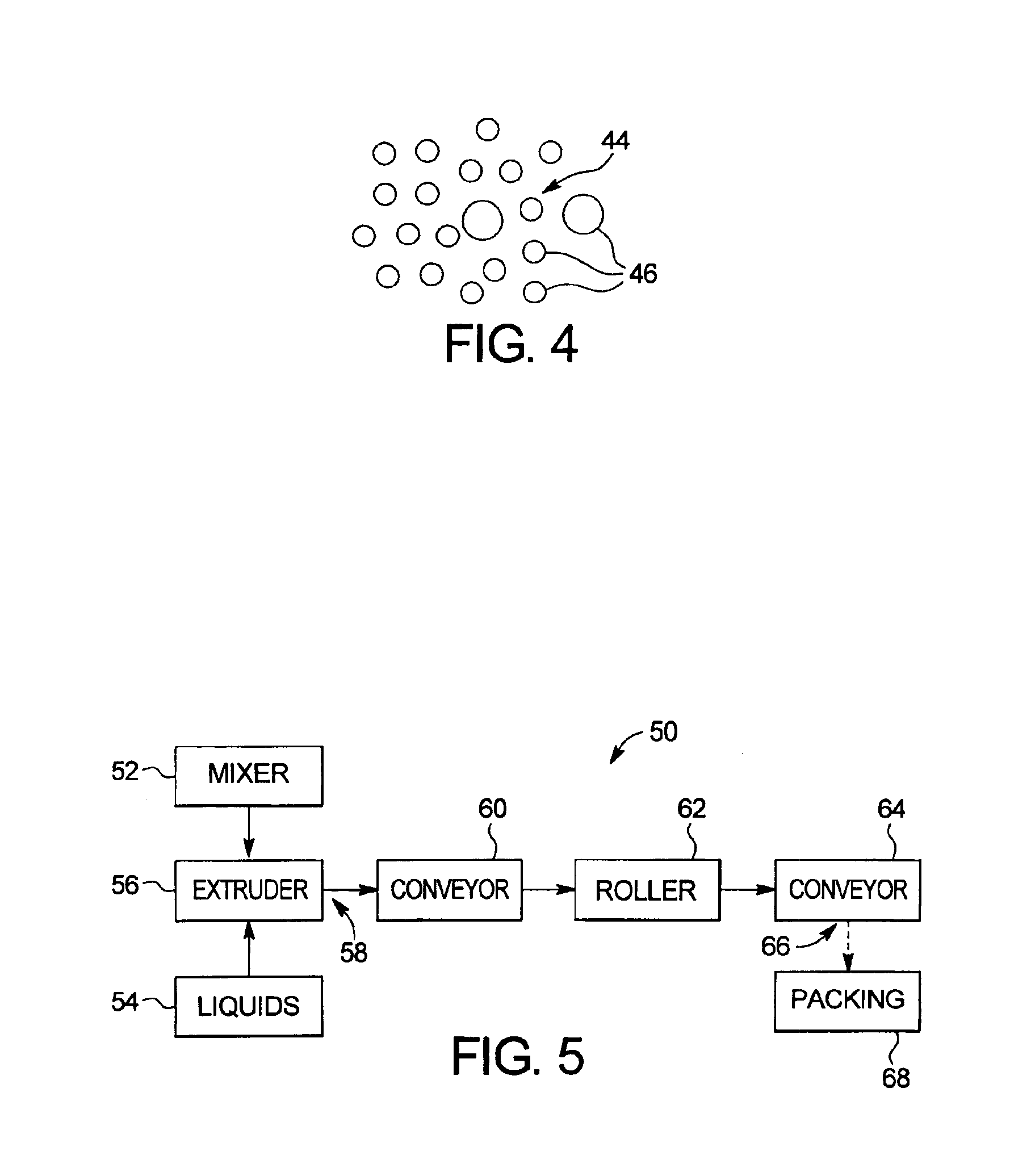Products and methods for improving animal dental hygiene
a technology for animal teeth and teeth, applied in the field of dental hygiene, can solve the problems of periodontal disease, poor dental health is very common in animals, and the long-term impact of poor dental health can be devastating to an animal, so as to improve the dental health of an animal and thus its general condition, and inhibit the buildup of tartar on the teeth
- Summary
- Abstract
- Description
- Claims
- Application Information
AI Technical Summary
Benefits of technology
Problems solved by technology
Method used
Image
Examples
example 1
[0088]Five separate batches of product samples were made from the five mixtures of dry ingredients prepared according to the compositions shown in Table 1 and designated “1a” through “1e”. Each batch of ingredients was in turn charged to a Sovemeca Mixer (Sovemeca Ltd, Vermand, France).
[0089]
TABLE 1Sample Number1a1b1c1d1eIngredient nameWt %Wt %Wt %Wt %Wt %SODIUM CASEINATE*44.028.036.048.0CORN STARCH38.8239.048.039.0LACTIC YEAST20.020.0EXTRACT POWDER**SODIUM BENTONITE3.5MILK PROTEIN CO-28.0PRECIPITATE***BROKEN RICE,39.0GROUNDGELATIN 10014.010.08.010.010.0BLOOM****PRESERVATIVE -0.750.70.70.70.7SORBIC ACIDNUTRIENT MIXTURE2.432.33.82.32.3Total100.00100.00100.00100.00100.00*Supplied by Sodial Ltd, Montablan, France. **Supplied by Bel Industries, Vêndome, France. ***Supplied by Centre R. & D. Nestlé, Lisieux, France ****Supplied by Dutch Gelatine Ltd.
[0090]After mixing, each of the dry mixtures was metered directly into the inlet of a long barrel high-speed twin screw extruder via a K-tr...
example no.2
EXAMPLE NO. 2
[0100]Each day, over a period of 21 days, each member of a group (designated “Product 1”) of 12 beagle dogs was individually fed one of the products made pursuant to Sample 1a in Example 1 above, in addition to a diet of a canned commercial pet food. The combined diet of chew product and canned food was designed to yield approximately 100% of the calculated daily metabolic energy (ME) requirements of the dog. The single daily chew product of sample 1a provided approximately 25% of the dog's daily ME needs.
[0101]A second group (designated “Control 1”) of 12 beagle dogs was simultaneously fed on only the canned commercial pet food, providing 100% of their daily ME requirement. At the end of the period, both groups were assessed for the accumulation of tartar on their teeth.
[0102]Before commencement of the test, an oral examination had been conducted on each dog prior to selecting it for the trial. Dogs with known or observed dental / oral problems (e.g. severe periodontal d...
example no.3
EXAMPLE NO. 3
[0112]In a separate test, the digestibility of the product of this invention was tested. Eight adult beagle dogs (4 female, 4 male) in good health were individually housed and fed once a day with a test diet.
[0113]This test group was designated “Product ID” and the dogs were fed a test diet that was a combination of the product of this invention and a commercial canned petfood available under the trade name “Winalot” (Winalot is a trademark of Societédes Produits Nestlé, Vevey, Switzerland). These foods were the only the sole source of nutrition for the animals during the trial. The daily ration was calculated for each animal based on its daily metabolic energy (ME) requirement. This was calculated using the formula:
ME requirement=132×BW0.75
[0114]The product was sent for analysis before the test started and analysed for moisture, protein, fat, ash, fiber and gross energy. The ME of the product was calculated using the formula:
ME of product=(3.5×% protein)+(8.5×% fat)+(3...
PUM
 Login to View More
Login to View More Abstract
Description
Claims
Application Information
 Login to View More
Login to View More - R&D
- Intellectual Property
- Life Sciences
- Materials
- Tech Scout
- Unparalleled Data Quality
- Higher Quality Content
- 60% Fewer Hallucinations
Browse by: Latest US Patents, China's latest patents, Technical Efficacy Thesaurus, Application Domain, Technology Topic, Popular Technical Reports.
© 2025 PatSnap. All rights reserved.Legal|Privacy policy|Modern Slavery Act Transparency Statement|Sitemap|About US| Contact US: help@patsnap.com



